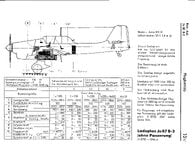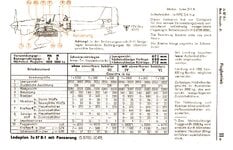Thumpalumpacus
Lieutenant Colonel
But they have a very well established record of crippling them
I'd say "damaging" rather than "crippling", myself.
Follow along with the video below to see how to install our site as a web app on your home screen.
Note: This feature may not be available in some browsers.
Ad: This forum contains affiliate links to products on Amazon and eBay. More information in Terms and rules
But they have a very well established record of crippling them
Indeed. The Barracuda crippled Tirpitz for two months in 1944.
Stukas did manage to sink the battleship Marat in 1941.
Shows the large variations in both Dive Bombers and bombs the resistance of ships.Stukas did manage to sink the battleship Marat in 1941.
Depends on the StukasRange of Stukas with 2200lb bombs?
True but especially on the "B"s you weren't flying very far with a 2200lb bomb. Using 1100lb bomb let you fill up the internal tanks and/or fit the drop tanks.Depends on the Stukas
The B was of shortest range (450-500km at altitude on max continuous). The R was much better - no wonder, two drop tanks make a lot of difference, up to 1430 km at altitude total; unfortunately, the detailed range/payload sheets for the Ju 87s are not easy to find
The D was still better, with 800L internal fuel vs. 480L on the B and R, as well as with to drop tanks.
No doubt about the B being the short range one (thus the R and bigger tanks on the D).True but especially on the "B"s you weren't flying very far with a 2200lb bomb. Using 1100lb bomb let you fill up the internal tanks and/or fit the drop tanks.


Germans knew where the Marat was. They knew where the airstrips was. Figuring out the mission route wasn't that hard.
Operating over water had a few problems of it's own.
Okay, was U.S.S. Tennessee crippled by the attack on Pearl Harbor? She received bomb damage only but was pinned in by U.S.S. West Virginia for a while.
The bomb hits on Tennessee around 0830 did relatively little damage.She lost four main-battery guns to two bomb hits, I'd call that "crippled" if on open sea having to consider possible surface action -- easier meat at that point.
In harbor with a sound hull, "damaged".
My opinion, worth every penny you've paid for it.
Your memory is playing tricks again.IIRC none of the ones that ditched at Philippine Sea were the SBDs
The bomb hits on Tennessee around 0830 did relatively little damage.
Hit 1 - 800kg dropped horizontally from a Kate passed through the catapult on turret 3. It broke up on partially passing through the turret roof. It did not explode, the filler only burning. The fire it caused was quickly put out. There was splinter damage within the turret and ONE gun was knocked out.
Hit 2 - again 800kg bomb dropped horizontally. Hit centre gun barrel of turret 2 knocking that gun out of action and spraying forward superstructure with splinters.
Note that the turrets were designed so that each gun was in its own separate sleeve with each capable of separate elevation (unlike the turrets of earlier classes). The greatest damage was caused by burning oil fuel from Arizona and West Virginia around her stern.
Agreed. USN was eager to replace the SBD with the SB2C despite the later being a problematic aircraft - the much better range/radius was worth it.
There is a lot of SAC and CS sheets available here; for the SB2C only the doc for the -3 is not present there.I thought the range of the SB2C was worse, hence the Battle of Philippine Sea.
You have to look at the range charts.I thought the range of the SB2C was worse, hence the Battle of Philippine Sea
Your memory is playing tricks again.
Firstly, by Philippine Sea only 2 squadrons were still flying SBDs from TF58 carriers:- VB-10 on Enterprise and VB-16 on Lexington. This summarises the position (from the cv6.org website):-
"There were two SBD Dauntless squadrons remaining in TF 58 at that time: VB-16 commanded by LCDR Ralph Weymouth in Lexington and VB-l0 in Enterprise. Both squadrons were nearing the end of their combat cruise, hence were well experienced. We felt that in the SBD (Slow But Deadly) we had a much better dive bomber than the SB2C (Beast). However, we had about 50-75 miles less combat radius in the Dauntless. Hence, we were the strike-limiting aircraft in the task force. Records will show that of the 26 SBDs flying on that strike, only three Dauntlesses went in the water. Lt. Lou Bangs, my second division leader, our only loss, went in the drink after having been waved off from the Big E because of a foul deck. He was rescued."
JU-87 had the advantage of long runways. Long is relative.Ju 87 have had it's shortcomings, not being able to lift heavy loads was not one of them.
JU-87 had the advantage of long runways. Long is relative.